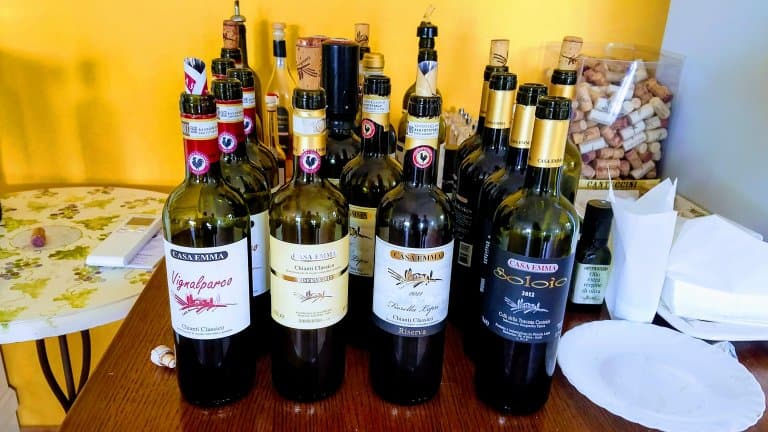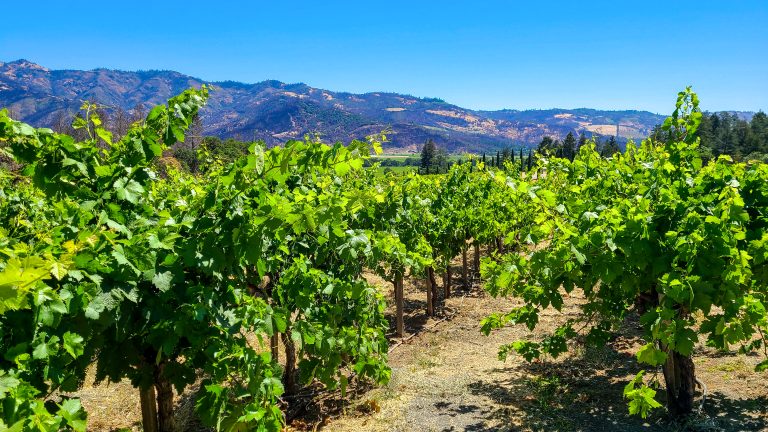The Complete Guide to Old World Wine and traditional wine making
Unlike the new world, which spans multiple continents, the old world refers specifically to Europe and the Mediterranean. The old world’s name is well-earned, as the wine traditions here date back thousands of years.
Some areas in Italy and France have been producing wine since ancient times, when Romans were pitting lions against Russell Crowe. Old world wine countries take pride in their traditions, making wine according to well established standards and even laws, in some cases.
The terroir in some French regions is so well suited to specific grapes that wine growers are prohibited from growing anything else. These regions are not suited for innovation but only because it is not necessary. Once you reach perfection, maintaining standards is all that matters.
**Boozing Abroad contains affiliate links throughout the site. If you choose to purchase items through these links, we will earn a small commission at NO extra cost to you. Read the full disclosure policy here**
What is old world wine?
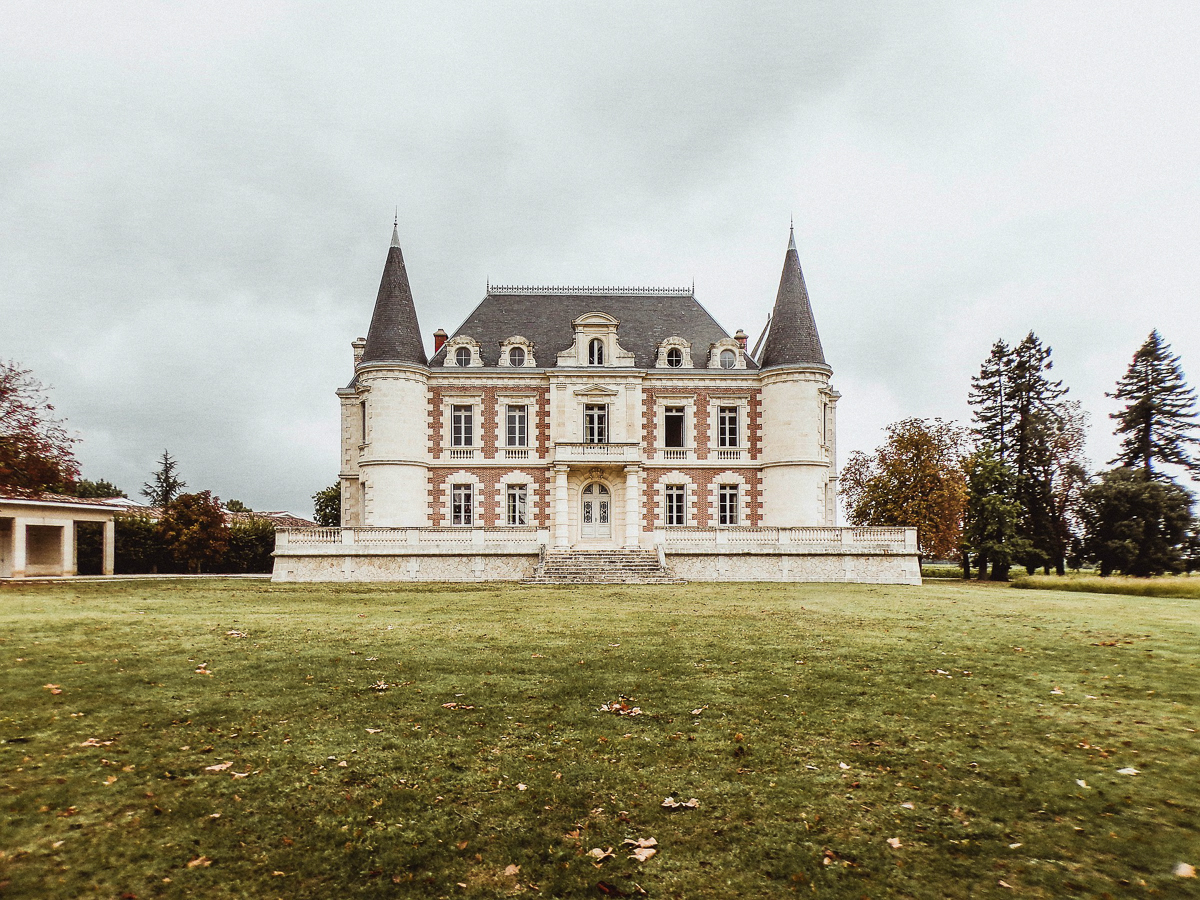
Technically speaking, old world wine is all wine that is grown and produced in Europe and the Mediterranean. The primary old world wine producing nations are France, Italy, Spain, Germany, Portugal and Austria.
If we can be honest for a second, though, France and Italy are the rock stars here. They have some of the oldest traditions, strictest laws, and highest levels of production.
In fact, they are literally the two biggest producers in the world. Both nations produce a spectrum ranging from affordable table wine to the most sought-after vintages in the world.
Whatever your price range, you should be able to find dangerously drinkable wine from either country.
How are old world wines identified?
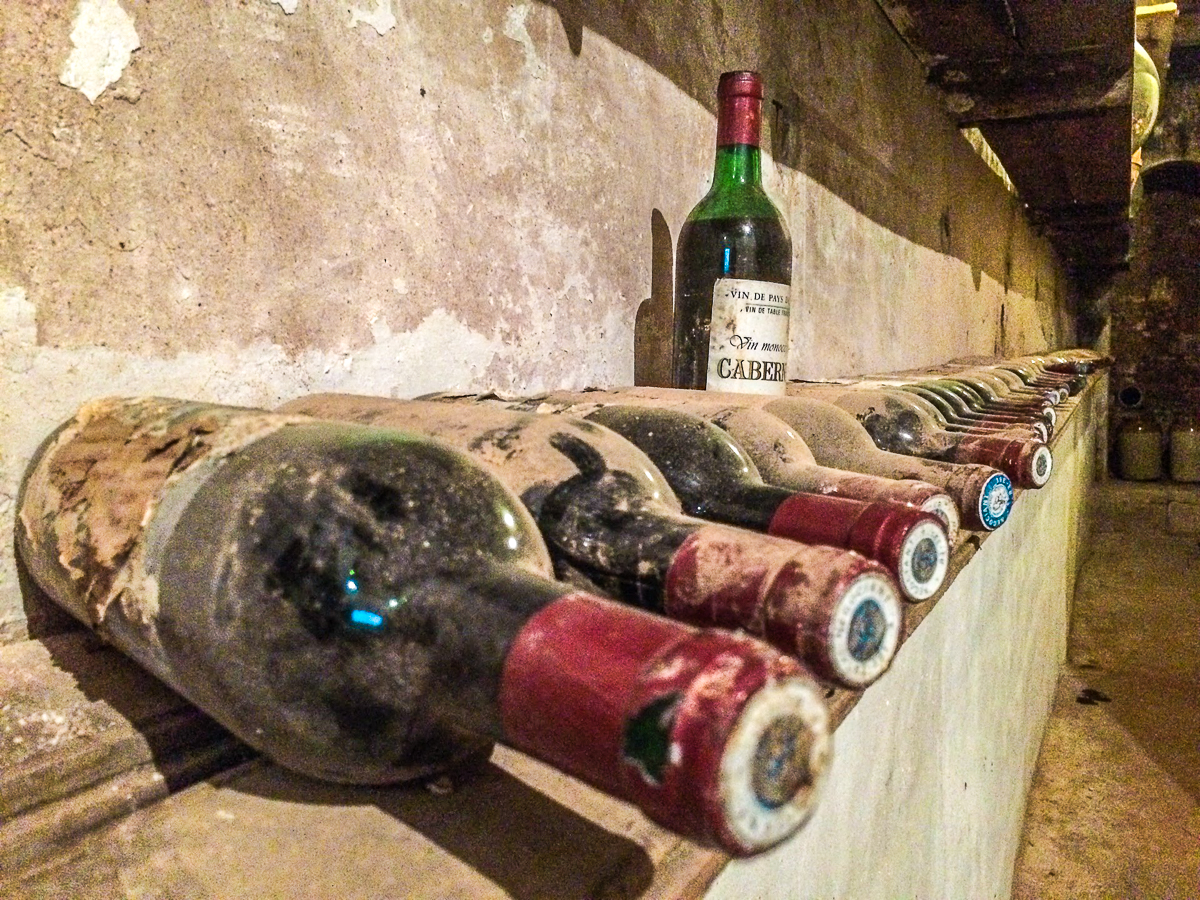
One benefit of old world wines is their ability to be easily identified by label…usually. Italy and France typically label their wine by region, which tells you a lot about the wine.
That being said, unlike in the new world wines, old world wine producers do not usually indicate which grape varietals went into a given wine.
If you know the region, you can often guess, and sometimes the varietals will be listed on the back of the bottle, in smaller letters. There are a few reasons for this way of labeling.
First of all, historically speaking, people did not care as much about the specific name of the grape they were drinking, as much as they did about the flavor, price, etc.
Furthermore, in these distinct little appellations, regional styles and trends might matter more than the grape in determining flavor and body. It is also common for wines to be a blend of many grapes in the old world, making labeling wines by grape pointless and confusing.
The other labeling quirk of the old world greats is the fact that they often put the quality tier that a wine inhabits on the label. In Italy, these standards for classification are very clear, and in France they are slightly less well-defined but no less strict.
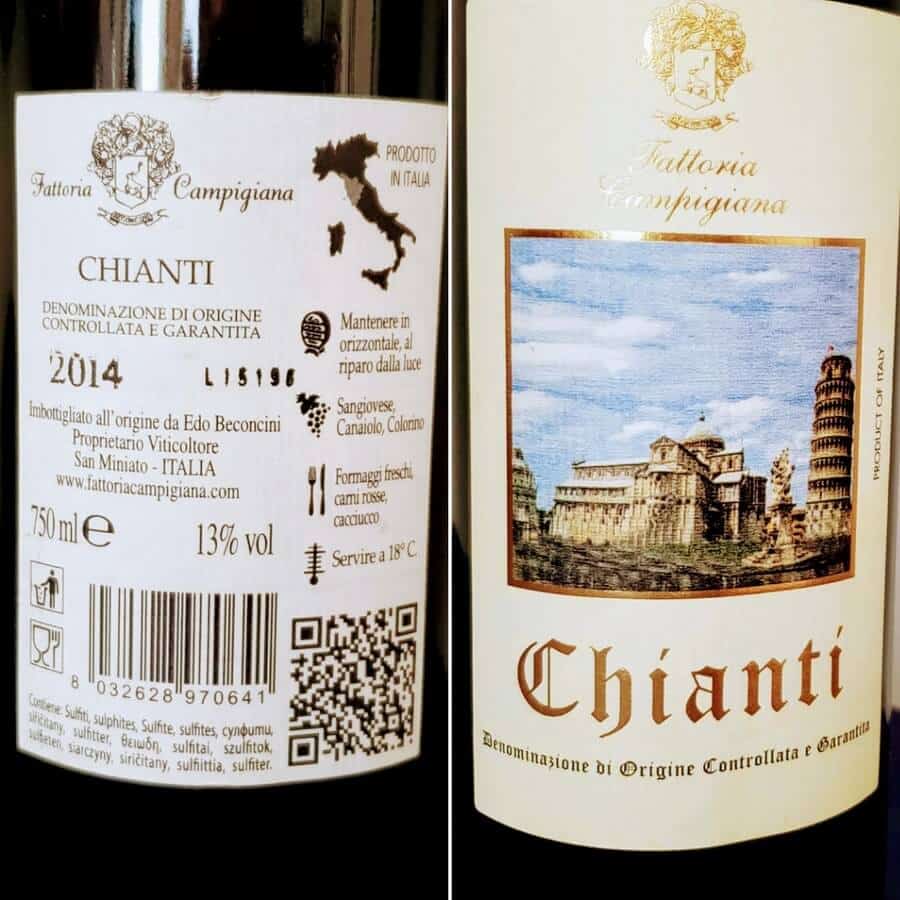
If you see “DOCG,” for instance, on an Italian label, you know that wine is from a specific region and has been made according to specific criteria. So, if you know what you like, this makes finding it as easy as pizza pie.
As for flavor and body, old world wines are generally lighter-bodied, earthier, and less fruit-forward than new world wines made from similar grapes. This results from the terroir in Europe, as well as the cooler climate.
Though there may be exceptions, old world wine fans like to taste the soil in which the wine was grown, while new world wine drinkers like to taste the fruit first.
What are the old world wine countries?
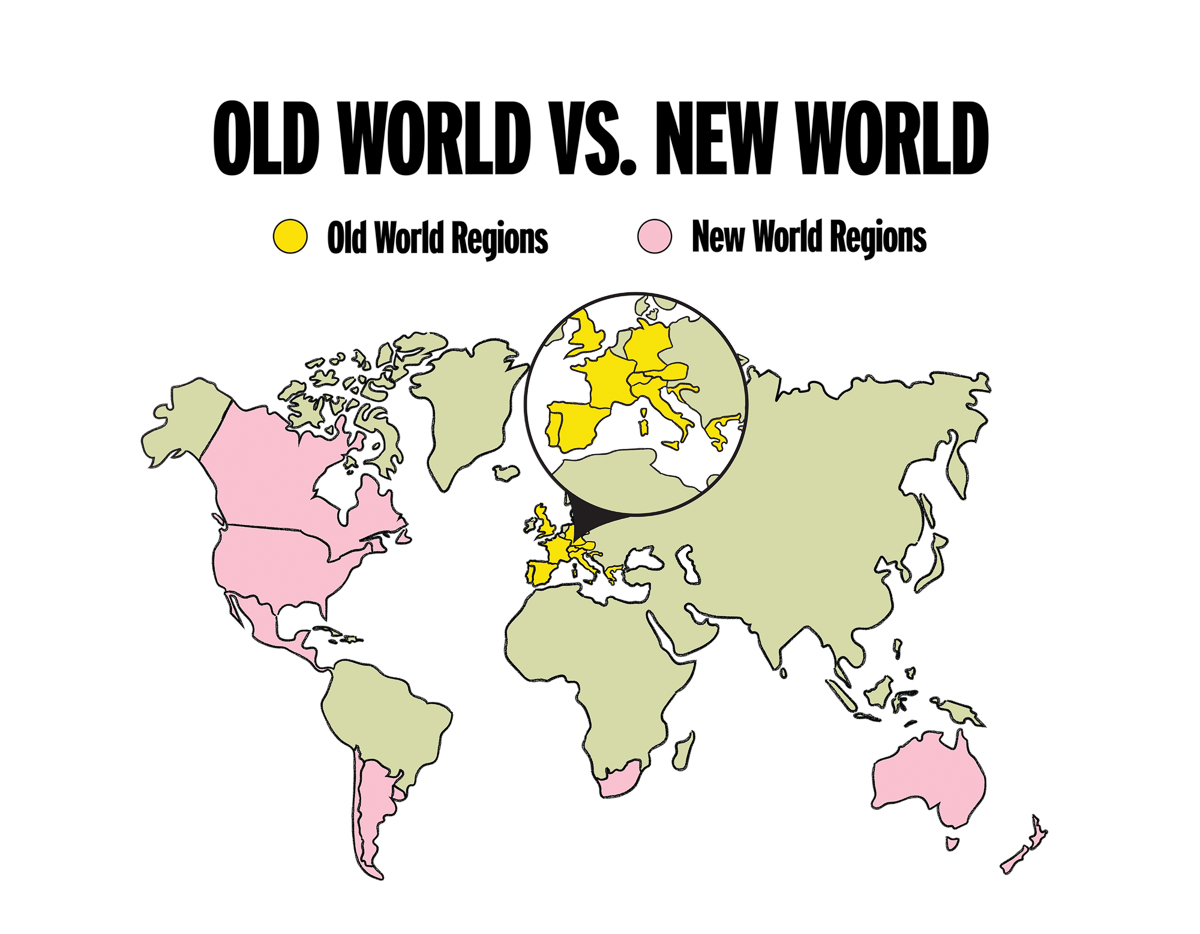
Lots of countries in Europe produce wine, but the ones that export the most are France, Italy, Germany, Spain, Portugal, and Austria.
Of these, Italy, France, and Spain lead by a long shot, all of them producing more than any new world wine producing nation.
France
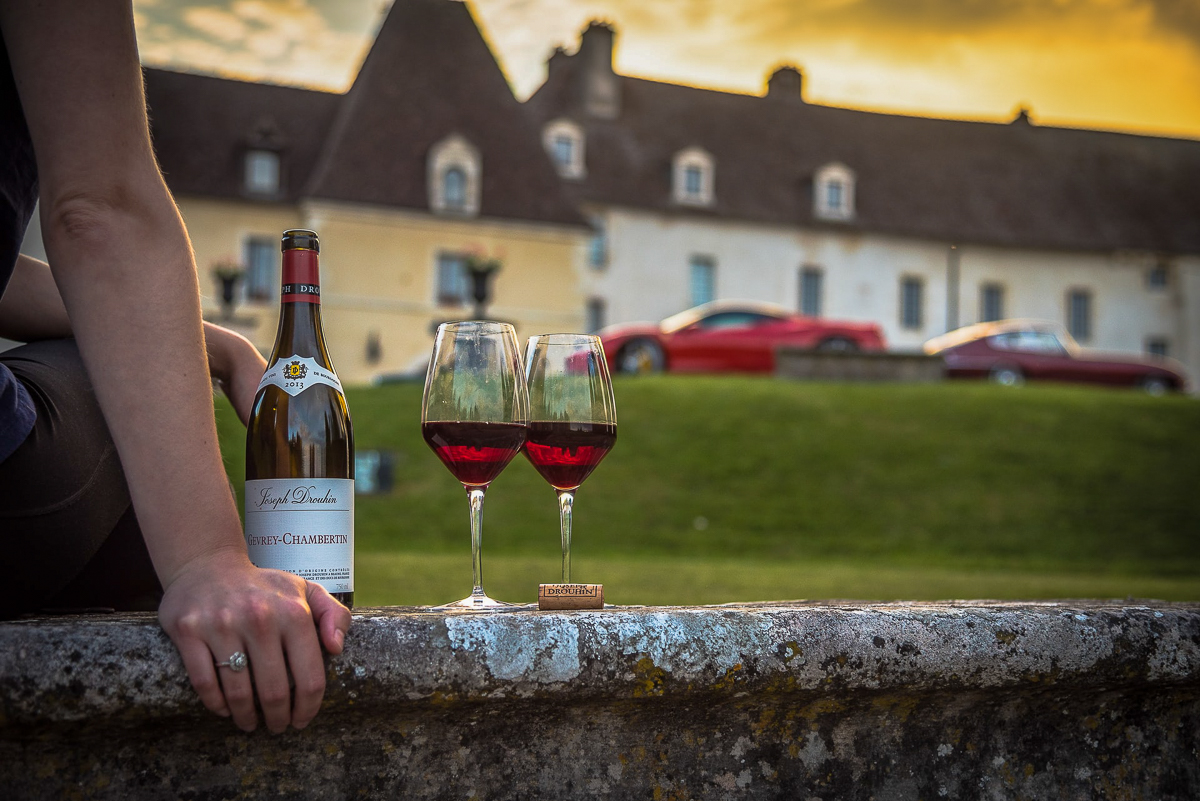
Not to inflate the already massive ego of French wine makers, but France is the king of old world wine.
They have some of the longest standing traditions, they have strict government-enforced standards for wine production, and they have a diverse array of styles and grape varietals. France contains several of the most renowned wine regions in the world, including Champagne, Burgundy, and Bordeaux.
Champagne is perhaps the most famous regionally named wine in the world. For over two hundred years, Champagne has been a status symbol, synonymous with true elegance and refinement, and this reputation is well-deserved.
The story of Champagne is not one of striving for excellence, though. As it is a cooler area, the grapes that grew there produced still wines that were weak, too light, and ultimately flavorless.
Over time, the wine makers there realized that if they made sparkling wines, utilizing a secondary fermentation process in the bottle, the results were bubbly, crisp, and complexly delicious.
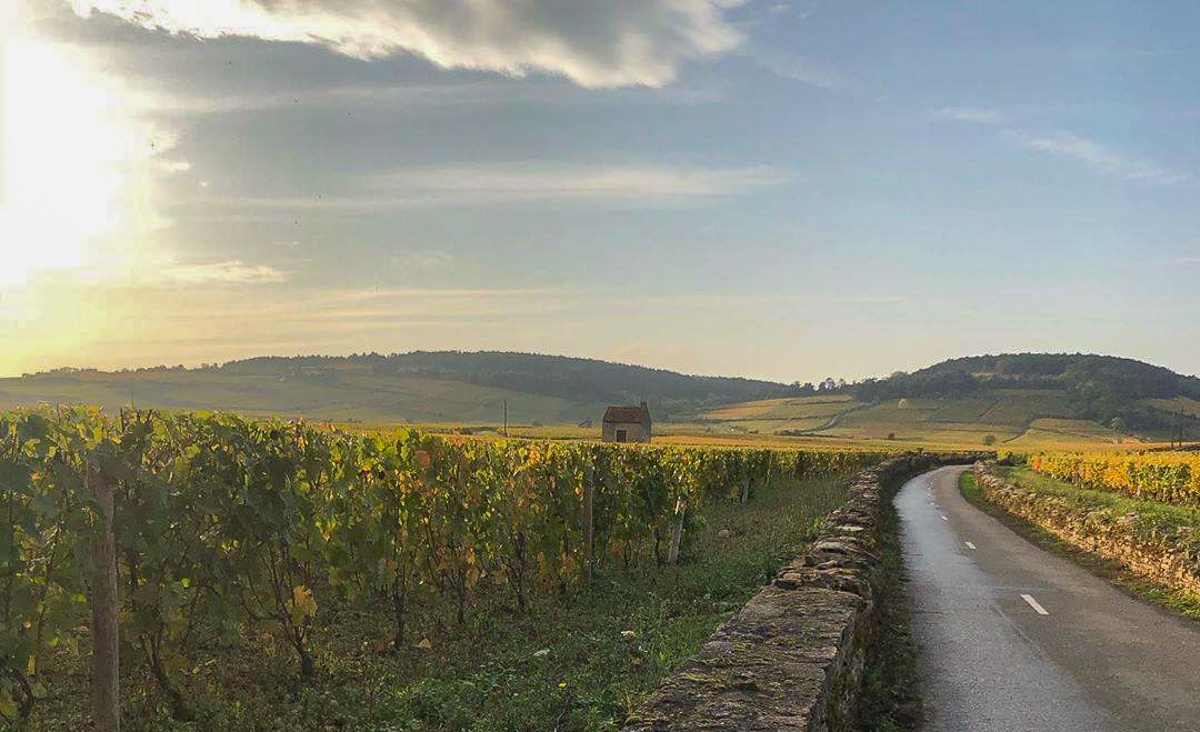
Burgundy is another iconic French wine region, with roots going back even further than Champagne. Burgundy’s first vineyards were established by the Romans and were run by Catholic monks for centuries to come.
These monks spent their entire lives studying, cataloguing, and developing the most precise techniques for growing the best wine possible in the soil they had. In many regards, these dirt-obsessed monks were the founders of the “craft” wine movement.
Before that, wine tended to be utilitarian and crude.
Today, Burgundy is the most expensive wine producing region for red wine, though pinot noir and gamay are the only red grapes grown there. Chardonnay is the only white, with Chablis being Burgundy’s most famous white wine appellation.
Pinot noirs from Burgundy are delicate, Earthy, and are often said to taste like mushrooms.
At their best, Burgundy pinot noirs give you a taste of the soil in which they were grown…but in a good way. They tend to be much more earth and soil-forward, with the red fruit notes being more of an afterthought.
Bordeaux is much bigger than either of these regions, producing a large amount of red and white wine. Bordeaux allows the use of multiple different grapes.
The region also differs from Burgundy, in terms of commercialization, as Bordeaux was exporting wine for profit back in medieval times.
To this day, Bordeaux produces some of the costliest old world wine and also some of the most affordable table wine. In terms of distinction, the main thing to know is the division between the right and left bank.
The right bank tends to produce red blends that are mostly merlot with some cab sprinkled in, while the left bank grows mostly cab with a little merlot thrown in the mix.
Italy
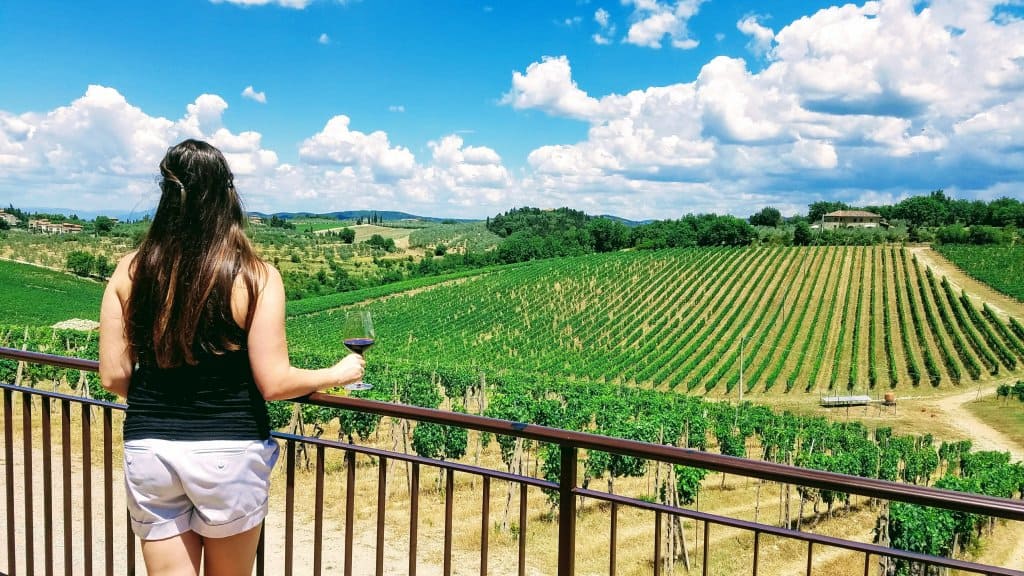
France may have perfected the art of viticulture, but Italian wine history goes much further back. After all, they (the Romans) were the ones who introduced wine cultivation to French in the first place.
The least they could do is show a little gratitude, right?
Italy is a diverse country, with many different wine producing regions, each of which is divided into seemingly infinite subdistricts and villages. As for grapes, there are thousands of different varietals grown in Italy, so it stands to reason they are not the main criterion used for labeling. As in France, location is far more important.
Piedmont, in Northern Italy, is one of the heaviest hitters in the world for both red and white wine. For one thing, they produce drinkable, affordable reds, like Barbera d’ Alba and Barbera d’ Asti. Made from the Barbera grape, these wines are medium-bodied and a little more fruit-forward than a lot of other old world wines.
Piedmont is also home to Barolo and Barbaresco. Appellations which produce Nebbiolo, an extremely thick-skinned and tannic red grape. These bold and costly reds are often aged for decades before being consumed with delicious Piedmont beef or roast pork.
Asti, the appellation responsible for the aforementioned Barbera, also produces Moscato d’ Asti, a slightly bubbly white wine with a distinctly fruity, sweet flavor.

In central Italy, Tuscany is by far the most famous region. Tuscany is home to the world famous “Super Tuscans” a distinction that essentially just means they do not follow local ordinances because they are just so bad ass and delicious. Super Tuscans are typically bold red wines made from French grapes.
Because of the hyper-specific Italian wine rules, they could not meet the requirements to be certified in their region, as they required wines be made from Italian grapes only.
You may not always know what you are getting, but some of these wines are superior to some of their Tuscan counterparts that did achieve the DOC or DOCG certifications.
Also in Tuscany, is Chianti, an ancient region that has been doing things one way for a long time. Chianti is known for Sangiovese and only Sangiovese.
These reds are approachable, drinkable, yet complex. They are less fruity than Barbera and go well with all the pasta you will undoubtedly be eating if you visit Tuscany.
Germany
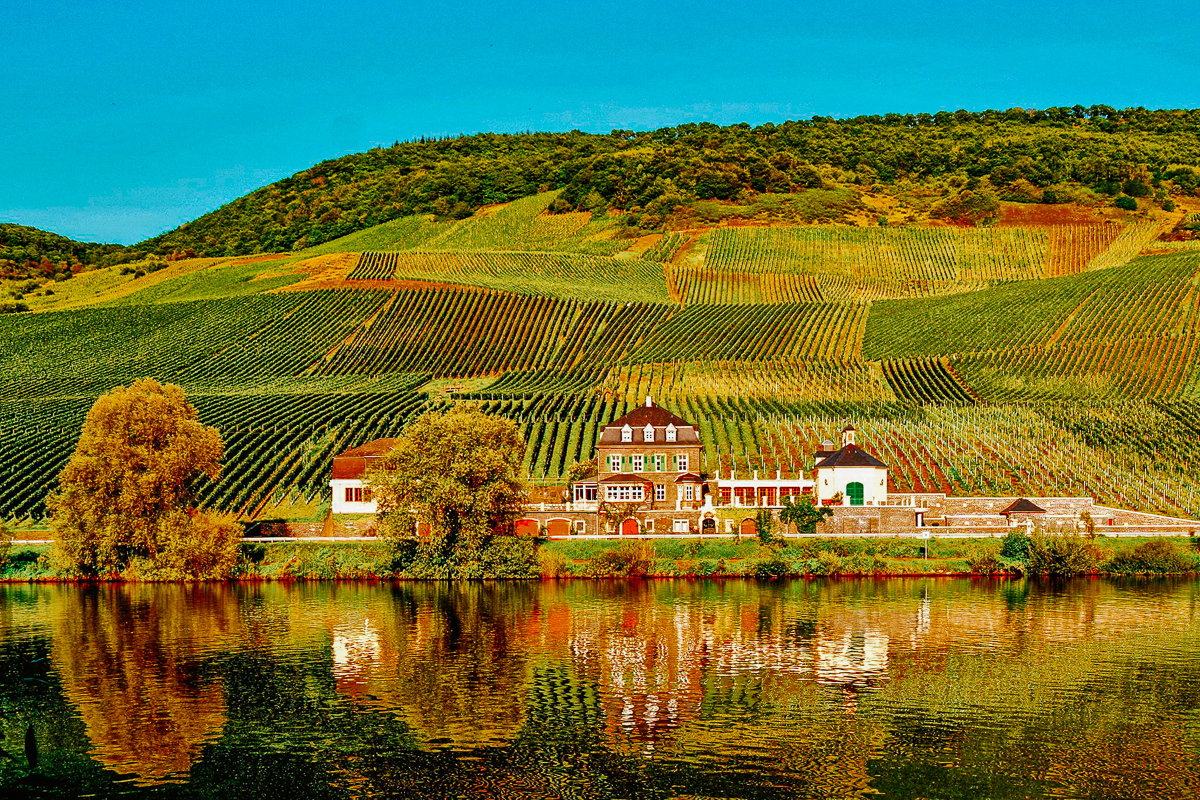
Though more known for its beer and sausages, Germany does make some unique and highly sophisticated wine. There are a few things that make Germany unique among old world wine countries.
For one thing, unlike every other old world wine country except Austria, German wine labels are based on the grape varietal rather than the region. Germany is also the precise opposite of Italy in terms of number of grape varietals.
While Italy has a plethora, Germany mainly focuses on one red grape and one white. Spatburgunder, as they call pinot noir, is that red, and Riesling is that white. Among those, Riesling is by far the most important.
German Riesling is world renowned, with Mosel being the most important region. Because Germany is so far North, German Riesling tends to be thinner and lower in alcohol content than most other wines.
Fortunately, Riesling is a rich, highly acidic grape whose flavor can shine through in spite of that. While many people think of Riesling as a sweet wine, there are also Rieslings that are both dry and off dry.
Because the sweetness level can vary so much, Germany has a scale for determining sweetness that is more complex than what is seen elsewhere.
Spain
Spain is a beautiful country whose history and progress was halted by political turmoil, in the early and middle parts of the twentieth century. It is for this reason and this reason alone that Spanish wine is not yet as expensive as French and Italian wine.
Spain, like Italy and France, has a wine history dating back to ancient times.
In the Southernmost portion of Spain, almost to the Strait of Gibraltar, lies Jerez. This relatively hot wine producing region is the home of Sherry, a world famous and highly unique fortified wine that has been popular in Britain for centuries.
Unlike virtually every other fortified wine, Sherry can be dry. This makes it ideal for serving with nutty strong cheeses and other things for which port or another dessert wine would be inappropriate.
Rioja is perhaps the second most well-known regional wine in Spain. Rioja produces full-bodied reds, predominantly made from the Spanish grape Tempranillo. Rioja’s system of certification has to do not only with grape varietals and wine making practices, but also with how long a wine must be aged.
In order to receive any sort of certification, Rioja wines must be aged for a certain number of years, with different tiers requiring different levels of aging.
Portugal
Portugal gets less attention in the old world wine community than Spain and Italy, but its Mediterranean climate does make it ideal for growing certain types of wine grapes.
Like most of the other old world wine countries, Portugal does have a government-enforced certification system for its wine.
One of the most famous white wines grown in Portugal is known as Vinho Verde, a slightly effervescent white wine that is light, crisp, drinkable and dry. Portugal is also known for a few dry reds, as well, but it is Port that the country is most known for.
Port is a world-famous dessert wine made from red grapes that, much like Sherry, has always been popular among the British. It goes well with rich, chocolatey desserts and strong cheeses.
Austria
Austria’s wine culture is similar to that of Germany, with the biggest difference being the warmer climate. Because it is slightly further South, Austrian wine makers have a little more wiggle room with what they can grow.
In addition to Riesling, they are known for a fascinatingly weird grape known as Gruner Veltliner. This wine is often described as having a smell and taste similar to petroleum jelly. They also grow a medium-bodied red grape known as Blaufrankisch.
The old world wine makers carry on traditions started centuries ago, but it does not mean they are stuck in the past.
As in the case of Champagne, most of these traditions did not begin on a whim but rather were developed as the best way to use the land and resources they had.
Plus, in the case of places like Tuscany and many parts of Spain, there have been a lot of innovations in recent decades. Even if you have been drinking old world wine your entire life, you likely have not tried the tiniest fraction of what is out there.
Now that you are on expert on Old World Wines, let’s take a look at New World Wines and how they differ.

